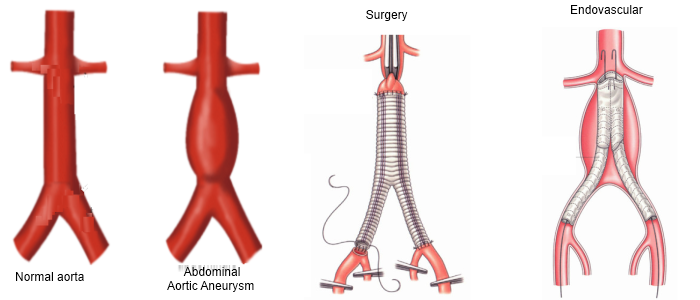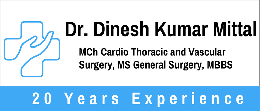How Does Aortic Intervention Help Treat Aortic Aneurysms?

Our body has many blood vessels; one important one is called the aorta. It carries healthy blood from the heart to the rest of the body. Sometimes, the aorta becomes weak and puffs up like a balloon, causing an “aortic aneurysm.” This problem doesn’t often show signs but can be severe, especially if it bursts.
Around the world, lots of people get aortic aneurysms each year, especially older adults. Sadly, many don’t know they have it until it becomes severe.
This blog talks about how aortic intervention helps treat aortic aneurysms.
What is an Aortic Aneurysm?
An aortic aneurysm occurs when the walls of the aorta weaken and dilate, causing a balloon-like bulge. This silent condition often presents no symptoms until it reaches a critical stage, where it can lead to complications such as rupture or dissection, both of which can be fatal.
What is the Significance of Aortic Intervention?
Aortic intervention refers to various medical procedures to manage aortic aneurysms and prevent potential complications. This intervention is crucial in safeguarding the health and well-being of individuals diagnosed with this condition. Here’s why it matters:
- Preventing Big Trouble: Aortic Intervention stops these weak spots from bursting, which could cause severe or even life-threatening problems.
- Different Fixes: Doctors use surgeries or special tools to fix these weak areas. They might put in a stent (a tube-like thing) to support the weak spot, or they might do a bigger surgery to fix the problem directly.
- Keeping Blood Flowing Smoothly: When the aorta is strong, it helps blood move properly around the body. Aortic intervention ensures that our blood flows smoothly, helping us stay healthy and safe from significant issues linked with a weakened aorta.
With his extensive expertise, Dr. Dinesh Mittal utilizes advanced techniques for aortic interventions, guaranteeing accurate diagnosis and treatment. His approach significantly betters outcomes and boosts patient well-being when dealing with aortic aneurysms.
What are the Advancements in Interventional Techniques?
Advancements in interventional techniques have vastly improved the treatment of problems with the aorta, our body’s main blood vessel. Here’s how they’ve improved:
- Less Cutting, More Precision: New methods mean more minor cuts or incisions during surgery. These techniques, like endovascular procedures, use tiny tools inserted through small holes instead of significant cuts. It’s like fixing something with smaller tools, making it easier for the body to heal.
- Faster Recovery: Because of these smaller incisions, people recover quicker. That means less time in the hospital and returning to normal activities sooner.
- Reduced Risks: These modern techniques are safer with fewer risks than older methods. They make surgeries less stressful for the body and lower the chances of problems during or after surgery.
- Improved Accuracy: Advanced imaging technology helps doctors see things better. They can precisely locate and fix the issue in the aorta, making treatments more effective.
- Overall Better Outcomes: Due to these advancements, people can have better results with fewer complications. It’s like using better tools to fix something, ensuring it’s set right, and helping keep us healthy for longer.
What are the Benefits of Aortic Intervention?
Aortic intervention, like surgeries or special treatments for problems in the aorta, offers several significant advantages.
- Prevention of Rupture: Intervention helps reduce the risk of aneurysm rupture, a potentially life-threatening emergency.
- Improved Quality of Life: Successful intervention procedures allow individuals to lead healthier lives, minimizing the condition’s impact on their daily activities.
- Enhanced Safety: Minimally invasive techniques lower the risks associated with surgery, making it a safer option for many patients.
“Through aortic intervention, we enhance patient outcomes significantly. It’s about precision in diagnosis and using advanced techniques for treatment, ensuring better lives for those battling aortic aneurysms. Improved safety and quality of life are the ultimate goals, ” says Dr. Dinesh Mittal.
One patient, praising Dr. Dinesh Mittal’s expertise in aortic interventions, exclaimed, “Dr. Dinesh Mittal’s expertise in aortic interventions truly changed my life. His skillful approach to treating my aortic aneurysm was reassuring. I felt safe and well cared for throughout the process. Thanks to his advanced techniques, my recovery was quicker than I expected. I’m grateful for Dr. Mittal’s dedication.”
Another patient said, “Choosing Dr. Dinesh Mittal for my aortic intervention was the best decision. His precision in diagnosis and the modern techniques he used made a huge difference. The surgery was smoother than I anticipated, and my recovery was faster than I could have hoped for. Dr. Mittal’s expertise transformed my experience positively.”
What is the Cost of Treating Aortic Aneurysm in India?
Treating an aortic aneurysm in India for Indian patients costs between Rs. 4,44,000 to Rs. 5,92,000. For international patients, the cost ranges from USD 9,000 to USD 11,000. During the treatment, the patient typically stays in the hospital for four days and continues recovery outside the hospital for ten days.
However, the total expense can vary based on the diagnosis and the facilities chosen by the patient. Factors like medical tests, doctor’s fees, hospital facilities, and the specific treatment opted for by the patient influence the overall cost of treating an abdominal aortic aneurysm.
Conclusion
Aortic intervention plays a critical role in managing aortic aneurysms, offering hope and improved outcomes for individuals diagnosed with this condition. Early diagnosis and advancements in interventional techniques have significantly improved the prognosis and quality of life for patients facing aortic aneurysms, emphasizing the importance of timely intervention and ongoing medical advancements in this field. If you suspect or have been diagnosed with an aortic aneurysm, consult a healthcare professional promptly to explore suitable intervention options and ensure optimal care for your health and well-being.
FAQs
-
Are there any specific symptoms of an aortic aneurysm?
Aortic aneurysms often don’t show symptoms, but sometimes there might be pain in the abdomen, chest, or back.
-
Is there any way to prevent an aortic aneurysm?
A healthy lifestyle, including managing blood pressure and avoiding smoking, can lower the risk of developing an aortic aneurysm.
-
How long does it take to recover from aortic intervention?
Recovery time can vary, but patients often resume normal activities within a few weeks after intervention.
-
Can an aortic aneurysm heal on its own without treatment?
It’s unlikely. Aneurysms generally require medical attention as they can grow larger and pose a risk of rupture.
-
Are aortic aneurysms hereditary?
Yes, there’s a genetic component. Having a family history of aneurysms can increase the risk of developing one.
Read More : How is Total Arterial CABG Beneficial for Cardiac Wellness and Longevity of a Patient’s Life?
